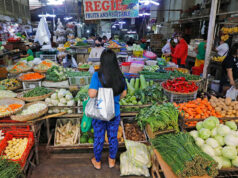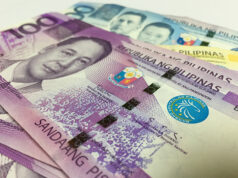Exhibit explores what binds ASEAN art together
DESPITE OUR differences in religion, culture, and lifestyle, the Philippines and its neighboring countries are held together by the language of art. To demonstrate both the contrasts and the resemblances, the Philippines is hosting a contemporary art exhibition called Ties of History: Art in Southeast Asia.
Curated by Patrick D. Flores, the exhibit also concludes the commemoration of the 50th anniversary of the Association of Southeast Asian Nations (ASEAN), of which the Philippines is one of the founding members.
Ties of History: Art in Southeast Asia will feature 10 artists from Singapore, Indonesia, Vietnam, Malaysia, Brunei, Myanmar, Cambodia, Thailand, Laos, and the Philippines.
It will be held simultaneously in three major art institutions: the Metropolitan Museum of Manila (MET), the University of the Philippines’ Vargas Museum, and the Yuchengco Museum.
It will open on Aug. 8 at the MET, Aug. 9 at the Yuchengco Museum, and Aug. 10 at the Vargas Museum, with a series of programs for each venue. The exhibit will run until Oct. 6 at all three venues.
The participating artists are Singapore’s Amanda Heng, the Philippines’ Roberto Feleo, Indonesia’s Anusapati, Vietnam’s Do Huang Tuong, Laos’ Savanhdary Vongpoothorn, Malaysia’s Chris Chong Chan Fui, Thailand’s Jedsada Tangtrakulwong, Myanmar’s Min Thein Sung, Cambodia’s Vuth Lyno, and Brunei’s Yasmin Jaidin.
In a press release, Dr. Flores said of the exhibition: “This undertaking…, draws attention to the thoughtful and sensitive process of artistic transformation and maturity and tries to avoid the tendency of survey exhibitions to merely select the most popular or the most accessible.”
He added that “it also reminds us that artistic practice is not fully formed but rather gleaned in the condition of constant forming. It is this constant forming that the project endeavors to curate.”
The title of the exhibition, Ties of History, is a phrase taken from the document signed by the ASEAN’s five founding members on Aug. 8, 1967. It describes “a region already bound together by ties of history and culture.” A region that is “conscious that in an increasingly interdependent world, the cherished ideals of peace, freedom, social justice, and economic well-being are best attained by fostering good understanding, good neighborliness and meaningful cooperation among the countries of the region.” The document gave birth to ASEAN, which, taken as a collective, is the world’s fifth largest economy.
Ties of History: Art in Southeast Asia is not only a survey of contemporary art in Southeast Asia, but it is also a study of a particular practice and realities that each artist has in his or her country.
The project is presented by the National Commission for Culture and the Arts (NCCA) through the Dalubhasaan Para sa Edukasyon sa Sining at Kultura with the support of the Office of Senator Loren Legarda.
NCCA Chairman Virgilio S. Almario said of the importance of the ASEAN in the current political climate: “ASEAN is a unique regional organization because it aims to be known to the world as one community despite its diversity in religion, race, and culture. In a world troubled by differences in belief, finding peace may be meditated through art that lets us see the threads that string us together.”



